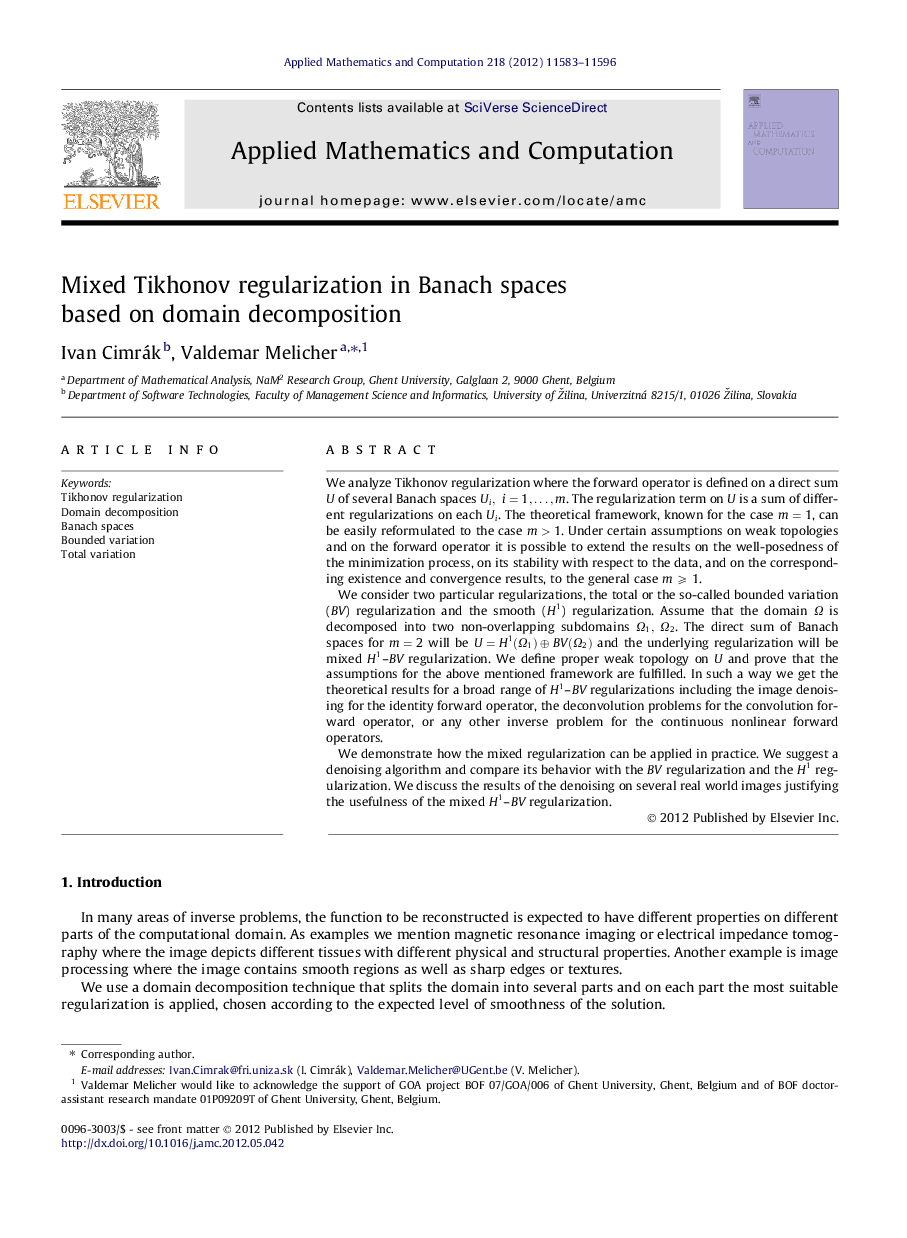| Article ID | Journal | Published Year | Pages | File Type |
|---|---|---|---|---|
| 4629862 | Applied Mathematics and Computation | 2012 | 14 Pages |
We analyze Tikhonov regularization where the forward operator is defined on a direct sum U of several Banach spaces Ui,i=1,…,m. The regularization term on U is a sum of different regularizations on each UiUi. The theoretical framework, known for the case m=1m=1, can be easily reformulated to the case m>1m>1. Under certain assumptions on weak topologies and on the forward operator it is possible to extend the results on the well-posedness of the minimization process, on its stability with respect to the data, and on the corresponding existence and convergence results, to the general case m⩾1m⩾1.We consider two particular regularizations, the total or the so-called bounded variation (BV ) regularization and the smooth (H1H1) regularization. Assume that the domain ΩΩ is decomposed into two non-overlapping subdomains Ω1,Ω2. The direct sum of Banach spaces for m=2m=2 will be U=H1(Ω1)⊕BV(Ω2)U=H1(Ω1)⊕BV(Ω2) and the underlying regularization will be mixed H1H1–BV regularization. We define proper weak topology on U and prove that the assumptions for the above mentioned framework are fulfilled. In such a way we get the theoretical results for a broad range of H1H1–BV regularizations including the image denoising for the identity forward operator, the deconvolution problems for the convolution forward operator, or any other inverse problem for the continuous nonlinear forward operators.We demonstrate how the mixed regularization can be applied in practice. We suggest a denoising algorithm and compare its behavior with the BV regularization and the H1H1 regularization. We discuss the results of the denoising on several real world images justifying the usefulness of the mixed H1H1–BV regularization.
